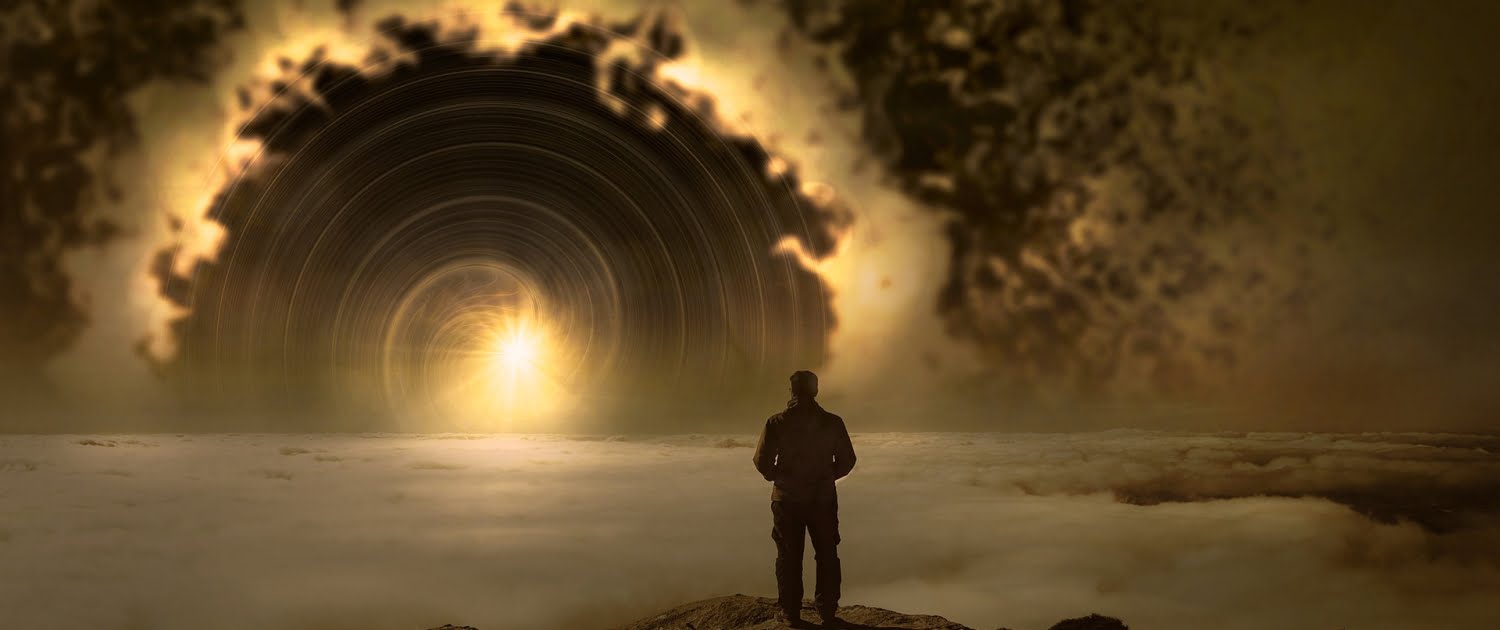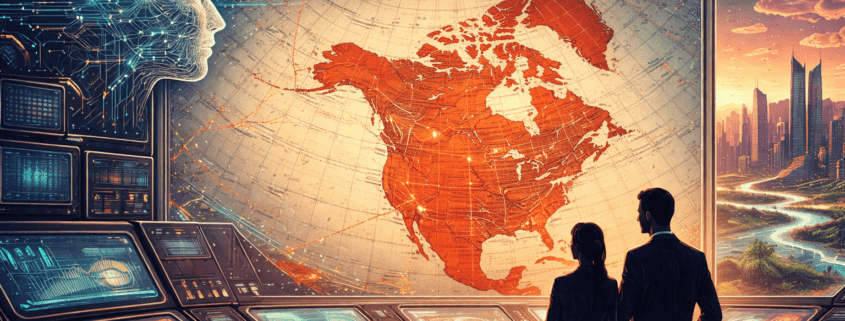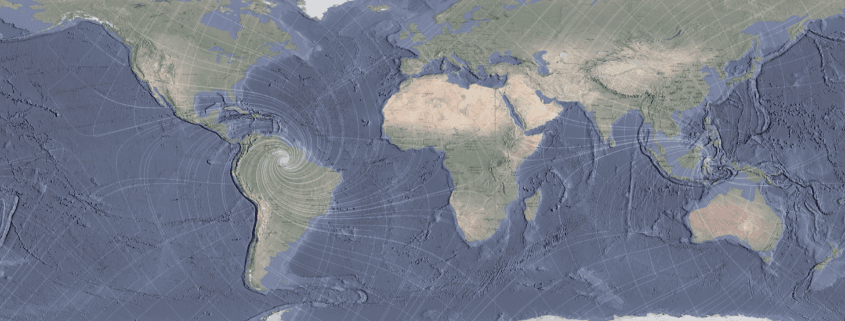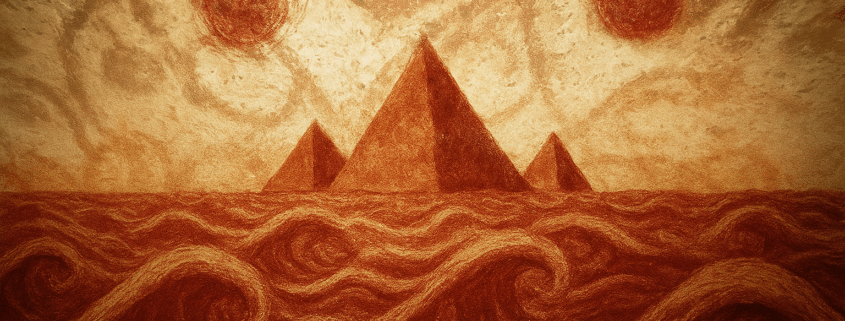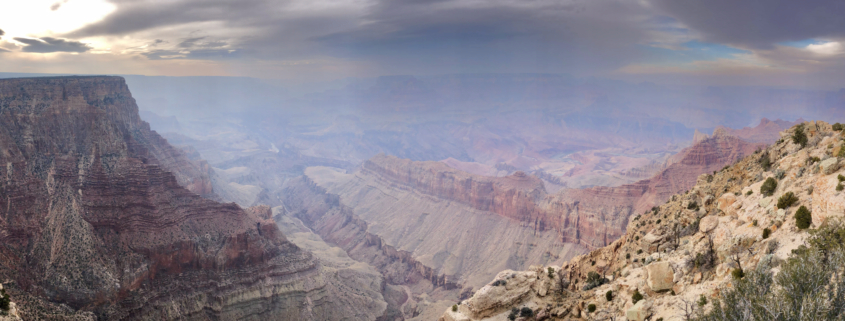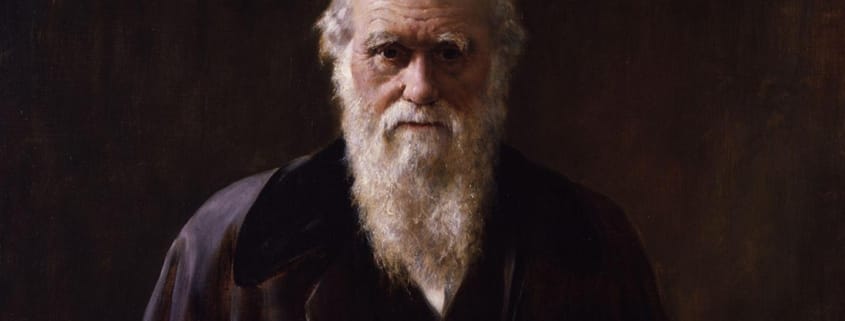A characteristic feature of the most ancient of philosophies of which we have any knowledge is the belief in the creative influences, aeons or gods in relation to the measurement of time. It was understood that every man contains within his nature elements which directly correspond to each one of the gods, the proportions depending on the time and place of his birth. The same notion was extended to human societies, which have a life cycle like that of an individual, and time itself was seen as a procession of gods or cosmic forces, regulating the course of events both throughout the day and over long periods of history.
Despite modern assertions to the contrary, the ancient astronomers were not so simple as to believe that time moves in circles with identical situations repeating themselves like a non-stop variety show. The movement was considered rather as a spiral. Neither was it thought that men were inescapably at the mercy of the gods, for although divine power was not denied, it was possible by recognising the nature of each deity to become aware of the consequences which might be anticipated during his season of sovereignty, and to adjust accordingly.
The influence of the sun on the rhythm of life is obvious to all in the changing seasons, and there are also many natural processes which follow cycles relating to sun spot activity and the phases of the moon. But the chief reason why astrologers concern themselves with the intricacies of celestial motion is on account of the link between time, the planetary positions and the human mind. It was formerly believed that most people are almost entirely unconscious of the true motives behind any thought or action, that everyone naturally behaves according to the light of the moment without being aware of the influences that determine his reactions in a particular situation. According to this philosophy, history is produced on the wheel of cosmic stimuli. Certain mental images, the gods or archetypes, have an autonomous life, rising like stars over the horizon of the unconscious mind in a predictable order of appearance. Each of the gods has a distinctive personality both in his own right and in combination with others on the analogy of colours or notes of music. If the blend of influences prevailing at a given time can be accurately reckoned, it therefore becomes possible to predict the direction of men’s thoughts at that time and to understand their consequent behaviour.
From any point on the earth’s surface one part of the heavens is visible, the other is concealed. When they are out of sight below the horizon, the planets are naturally still in existence, but their light is not apparent and the astrologer considers their influence to be inactive. The same is true of the gods. The active mind is that part responding to the influences which stand above the horizon; the rest is dormant. The purpose in measuring the greater cycles of time, an art which was highly cultivated by the Indians, Chinese, Babylonians and Egyptians and became an obsession to the Mexicans, is to foresee the nature of the influences that will dominate the immediate future, so as to adopt the appropriate responses.
The rising sun crossing the horizon sends an electrical charge through the earth’s magnetic field and has a correspondingly stimulating effect on the rhythm of the human body and thus on the senses. The rising moon has a similar influence, and so to a far lesser extent do the planets and perhaps the nearer stars. The setting sun has the opposite effect. The birds fall silent, tribesmen rest quietly before the evening meal, a melancholy beauty is apparent throughout nature. So it is with ideas. A new or renewed god appears on the horizon; at the same time his image is born into the conscious mind, presenting itself in the form of dreams, shapes, patterns and thoughts which disturb the existing balance and promote change in the individual and consequently in society. The image of the old god wanes, acquiring in the process the nostalgic aura of sunset that renders old ideas and a passing way of life so irresistibly appealing to the romantic. Sacred history is the record of the greater psychic changes which have taken place over thousands of years, attended by the rise and fall of civilisations, each with its peculiar obsessions and ways of thought.
According to the Indian Satapatha, the sun when it is set is as an embryo; when it rises it is a new-born child. The career of a god was seen in the same way; he is young, vigorous and disruptive at birth, reigning in splendour at midday, becoming stiff and lifeless and losing his strength towards night. The ancient division of time by units of the number 12 derived from the postulation of twelve principal deities, dominating the greater cycles of history. Each of the gods rules over 30° of the zodiacal circle, a twelfth part of the great year containing 25,920 solar years, so the length of a divine reign is 2160 years. This is the period known as the Platonic month.
The sacred history of each Platonic month starts with the story of a divine man who enacts its entire subsequent course in the events of his lifetime. To this man is attributed the characteristic symbol of the age. Thus Christ, born at the dawn of the Piscean age, was Ikthus the Fish, the letters of which name form the initials of the Greek phrase Jesus Christ, Son of God, Saviour. The vesica piscis, the geometrical sign of the fish, was adopted as the basic figure of Christian architecture and iconography, an obvious example being the mandorla that surrounds Christ in Glory. At the same time images such as the Celtic fish of enlightenment and the grail at the castle of the Fisher King were given new life in Christian myth and mystery ritual. Traces of an earlier fluctuation of symbols can be found in the age of Aries the Ram, which produced the ram’s horn capital of Greek temples and which began in about 2000 BC with the rise of the Egyptian ram god Amun. The preceding age of Taurus left its mark in the bull cults of remoter antiquity.
Those who understand the heavens can predict the moment of sunrise by watching for certain warning stars that show on the horizon just before the first light. The appearance of the constellation Virgo and of Sirius the eastern star were the traditional signs of approaching dawn, and the story of Christ the Sol Novum, born of a Virgin beneath the portent of a star, followed this pattern. As astronomical portents give notice of a new dawn, so also were psychic portents said to precede the great changes consequent upon the rise of a new god among the dominant hierarchy. The observation and interpretation of portents were therefore considered in former times to be an essential function of sound government, for certain signs were regarded as symptoms of change and as indications of its probable direction.
It is an obvious fact of nature, apparent to all but the most mechanistic astrologers, that time, being organic, does not manifest its influences with clockwork regularity, but proceeds in waves like the ocean. An astrologer must therefore pay quite as much attention to the recognition of portents as to his calculations on the theoretical nature of current influences. It has long been considered, and remains an item of popular wisdom, that coming events cast their shadows before them in the shape of dreams, omens and strange encounters, and the correct reading of these enables an astrologer to predict with confidence the imminent occurrence of those events of which the stars have already given warning. The great magicians have always attached importance to the close observation of nature, for natural omens have a more immediate significance than can be found in the impersonal cycles of the heavens. The stars measure the rhythms of cosmic forces and transmit their influences; portents are the stimuli through which these influences become active in the mind.
In China and the ancient East the occurrence of strange portents was meticulously recorded by local governors in their annual reports. A fox appeared in the centre of the city, a fiery dragon passed overhead, a cow gave birth to a monster: such events, insignificant in themselves, might, if widely repeated in a single year, suggest to the central authority that something unusual was taking place. This idea was not simply fanciful, but derived from a fine perception of the exact relationship between cause and effect. Misfortunes within the state were regarded as symptoms of a disease within the social body, which might be diagnosed and treated by one who understood such things. Hellmut Wilhelm in his book Change, a commentary on the I Ching, gives several examples of errors in government, which were found by the Chinese to produce certain specific ills together with the corresponding symptoms. Offences against ritual, the appointment of unworthy persons, the dismissal of the worthy and listening to slander have as their consequence fires and strokes of lightning. Excess and wastefulness in the administration bring about heart and abdominal disease, dust storms and earthquakes. Another ill, the black evil, associated with careless observation of marriage rites and the wrong relationship between emperor and people, was seen to produce nervousness and diseases of the ear, long cold spells and deaths among animals. In the ancient collection of Chinese texts, brought together in 1050 Bc and known as the Great Law, the importance of observing omens is clearly explained:
‘It is the duty of the government all the time to watch carefully the phenomena of nature, which reflect in the world of nature the order and disorder in the world of government. The government is bound to watch the phenomena of nature in order to be able at once to change what is in need of change. When the course of nature runs properly, it is a sign that the government is good, but when there is some disturbance in nature, it is a sign that there is something wrong in the government. With the help of fixed tables it is possible to learn from the disturbance in nature what is the sin that caused it. Any disturbance in the sun accuses the emperor. A disturbance around the sun accuses the court and the ministers. A disturbance in the moon accuses the queen and the harem. Good weather that lasts too long shows that the emperor is too inactive. Days which continue to be cloudy show that the emperor lacks understanding. Too much rainfall shows that he is unjust. Lack of rain shows that he is careless. Excessive cold shows that he is inconsiderate of others, stormy winds that he is lazy. A good harvest proves that all is well, a bad harvest that the government is at fault’.
The purpose behind the official practice of astrology was to preserve the balance of society in accordance with the divine law. Rigid theories of government can never for long be applied in practice, for the forms which are appropriate at one time are not so at another. Like every other organism, a living society is in a constant state of change and if the changes are not taken into account in the adoption of rules and conventions suitable for the age, relationships begin to deteriorate, leading to sullenness, friction and outbreaks of violence. Where the social order fails to respond in a sensitive way to the influences prevailing at the time, it falls in danger of destruction through the release of forces generated by the suppressed aspirations of its members. The recognition of this fact in antiquity accounts for the stability and long endurance of civilisations in countries such as Egypt and China, where the rulers observed the changes, both those current and those portended, and anticipated them in their actions. In this way the ages succeeded each other without revolutionary disturbance, tired dynasties gave way when their time had come and were replaced in almost ritual fashion, a process made possible by the existence of an established astrological tradition.
It is well known that at the time of the arrival in Mexico of Cortez and the Spanish adventurers, the Aztec astrologers were observing portents which indicated the imminent reappearance of the god Quetzalcoatl. There was an old prophecy that at his return the rule of the Aztecs would come to an end. Like the Spaniards, the god was traditionally fair skinned and bearded, and the King, hearing descriptions of the invading party, understood that Quetzalcoatl had returned and offered only a half-hearted resistance before the fated collapse of his empire. However he had acted, the confrontation between the two worlds would inevitably have ended sooner or later with the rape of Mexican civilisation by the ironclad Europeans. The issue was beyond human control. In contrast to the invasion of Mexico, the European intervention in China at the end of last century had as its purpose the preservation of a dying dynasty which, in accordance with the orderly cycles that had prevailed in China over thousands of years, was due to be replaced by another more virile. The interruption of this process had the effect of promoting revolution, leading to the destruction of the Chinese civilisation. As in Mexico, the question is not whether the issue was desirable, for in each case, whatever the intentions of the individuals involved, it was inevitable.
Trivial omens give warning of trivial events, but the momentous historical events that attend the birth of a greater cycle in time are preceded by phenomena of a portentous nature, through which the least observant can scarcely fail to become aware of impending change. Shortly before the arrival of the Spaniards in Mexico, the year 1507 initiated, according to the Aztec reckoning, an important new cycle. In that year an eclipse took place, followed by an earthquake, and each succeeding year brought forth ever more dramatic portents of disaster. A sparkling, three-headed comet appeared in broad daylight, for forty days a pyramid of light hung in the sky by night and in 1519, the year of the Spanish landing, a brightly luminous object hovered over the city, terrifying the people and exciting the worst anticipations of the astrologers.
It has always been believed that the decisive moments in history are attended by the appearance of strange aerial phenomena, such as the glowing cross recorded by Josephus at the fall of Jerusalem or the comet over the battlefield of Hastings. Since we no longer suppose that there is any particular correspondence between the celestial pattern and the course of human affairs, these things are usually explained as projections of the observer’s state of mind or as poetic symbols of drama. It is scarcely possible now to believe otherwise, yet there are obvious dangers in placing too much reliance on historical interpretations which simply reflect the current theories of our time. The opinion of magicians in all ages regarding portents and similar manifestations is that they are ‘part spiritual, part material’, having an existence which is both physical and psychic. This concept was revived by Jung, who in one of his last books, Flying Saucers, the Myth of Things Seen in the Sky, observed that the unknown phenomena, which have been reported from every part of the world since the last war, not only had an evident physical reality, but also appeared as autonomous images in the minds of his patients. It was the fact that flying saucers occur as actual, visible objects as well as in dreams and fantasies that persuaded Jung of his duty to bring the phenomena to the notice of others, even though he was aware that to do so was to invite ridicule and to place in jeopardy his ‘hard-won reputation for truthfulness, trustworthiness and scientific judgment’. The reason why Jung was so insistent on the subject of flying saucers was on account of the historical evidence which shows that objects of this nature have always been regarded as portents of the revolutionary events associated with the birth of a new astrological month within the great year. Of the modern flying saucer rumours Jung wrote, ‘As we know from ancient Egyptian history they are symptoms of psychic changes that always appear at the end of one Platonic month and at the beginning of another’.
For his work on flying saucers Jung was attacked on two sides, by those who insisted that the phenomenon was of a purely psychological nature and by others equally certain that flying saucers are as material as ourselves. The analogy with human nature does not, however, support the mechanical theory for, as the philosopher magicians of antiquity were aware, intelligence is made up of the same creative influences that reign throughout the universe, so it is impossible to attribute an exclusively external or internal origin to portentous phenomena such as are now seen in the skies. The magical belief was that, although the power of the gods is irresistible, individually they are inferior to men, and if he becomes conscious of the position and achieves dominion over his mind, a man can become in himself the temple of the gods and dispose of their influence to his own advantage instead of being for ever at the mercy of unrecognised forces.
Man, temple and cosmos were therefore seen to be identical, and on this understanding the entire philosophy and science of the ancient world was founded. Unless the justification for this point of view is appreciated, it is impossible to gain any deep insight into the history of the past or to sympathise with the re-establishment of mystical perception at the present. Scholars who like to trace the progress of science from the first manufactured tool to the most recent agent of world destruction have cruelly misunderstood the geocentric cosmologies of antiquity, which were adopted for philosophic reasons, not as models of physical reality. The medieval Church declared the earth to be at the centre of the universe as a matter of actual fact, to the disadvantage of those who knew otherwise; but it is obvious from our knowledge of their achievements that the early Chinese and Chaldean astronomers could never have thought such a thing, and the subtleties recently discovered in the megalithic stone arrangements of Britain and France suppose a knowledge of the solar system on the part of the inhabitants of Europe at least 4000 years ago, which was only regained in the age of Galileo. The Greeks, who had forgotten the observational science and adopted their cosmology from the Egyptians, may have concluded through the exercise of pious reason that the planets revolved round the earth at the centre, though Newton believed that Ptolomy had placed them in this relationship for astrological purposes. Confucius certainly taught the heliocentric system, which was also adopted by the early Celtic Church in Britain until its suppression by Rome. Moreover, the existence of the ancient canon, which we shall inspect in later chapters, with its complement of cosmic numbers and measurements, reveals a higher level of astronomical skill in the remote past than in any period known to history.
In this lies the difference between what Jung distinguished as the scientific view of the world and the world of actual experience, that whereas we are now asked to regard ourselves as irrelevant particles in infinite space, the ancient philosophers were concerned with the relationship between men and their environment, with the individual at the centre of his own universe. The earth moves round the sun, but from the terrestrial point of view it is the other way about. The astrologer is only concerned with the planetary positions as they affect the earth and his own particular part of it, so his chart is drawn up with the earth at the centre and himself at the centre of the earth.
The cosmologies of all nations were framed in this way. The temple, like Jerusalem on medieval maps, was in the middle; within it the King’s chamber, and the King on his throne at the heart of all. Not only did he symbolise the sun, he actually was the sun of the social order as the proton is of the atom. From him emanated the solar radiance by which the kingdom was made prosperous and fertile. His instrument was the temple, which not only acted as a transmitter of his power, but as an accumulator of the cosmic forces by which he was charged. The chief reason why the astronomical orientations of temples was considered of such importance was that the influences bearing on the King, and through him on the people, must be those appropriate to the time and situation.
The geocentric universe was not originally a concept born of ignorance, but a recognition of reality. There are as many stars in the universe as there are grains of sand on the sea shores, and formerly there were many nations across the world, each one ordered after the cosmic model, an organic unit conscious of its own orbit and recognising those of its neighbours. A man was known to be an insignificant item in the cosmos, a small component in a group, one of many comprising the body of a petty kingdom. But although his place in the cosmic hierarchy might appear fixed and limited, in fact each man was its lord, for if the whole universe was made up of infinite units such as himself, yet he too was made up of the same elements that comprise the whole. Space stretched out endlessly in both directions with the man at the centre. The great magicians were those who understood this, not just as a theory but as experienced reality, and the further we see back into the past the more general the realisation appears to have been. It was not simply a question of greater sensitivity in former ages, but of greater knowledge. This knowledge has suffered eclipse with the use of a different approach to science. But we are neither more stupid nor more clever than the people of any other period since the first moment of consciousness; merely, the changing light of the times illuminates different areas of perception. It is not therefore with the intention of reviewing a dead and outmoded way of thought that we here study the cosmic canon of the ancient world; its relevance will be apparent to all who find in the situation of the present living evidence of the cyclical nature of influences.


